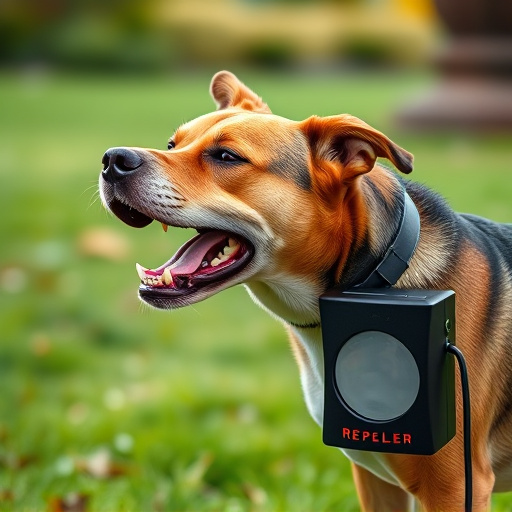Canine behavior varies widely based on genetics and early experiences, ranging from playful to territorial or aggressive. Owners can improve communication by observing their dogs' behaviors. Electronic Dog Repellents (EDRs), like ultrasonic systems, offer a safe, humane way to address unwanted behavior, utilizing inaudible sound waves to capture dogs' attention and alter behavior. EDR safety hinges on adherence to stringent standards set by regulatory bodies, with certification from reputable organizations ensuring effectiveness, safety, and reliability. Regular maintenance is crucial for optimal performance and safety.
“Unleash the power of behavior modification with an innovative approach—the Canine Behavior Modification Ultrasonic System. This cutting-edge technology offers a safe and effective solution for training dogs, addressing unwanted behaviors.
The article delves into the science behind canine behavior, exploring how ultrasonic systems can be tailored to specific breed traits. We also dissect the importance of Electronic Dog Repellent Safety Standards and Certification, ensuring consumer protection. Additionally, learn practical implementation tips for optimal results while maintaining a safe environment.”
- Understanding Canine Behavior and the Role of Ultrasonic Systems
- Electronic Dog Repellent Safety Standards and Certification Process
- Implementation and Training: Ensuring Effective and Safe Use
Understanding Canine Behavior and the Role of Ultrasonic Systems
Canine behavior is a complex and fascinating subject, offering insights into how our four-legged companions interact with their surroundings. Understanding a dog’s behavior is crucial for effective training and fostering a harmonious relationship. Each canine has its own unique personality, shaped by genetics, early experiences, and socialization. Behaviors can range from playful antics to territorial marking, barking, or even aggressive responses. By observing and interpreting these behaviors, owners can better communicate with their pets and address any issues.
Ultrasonic systems have emerged as a tool in canine behavior modification, offering a non-lethal and humane approach to addressing unwanted behaviors. These electronic dog repelents emit high-frequency sound waves that are inaudible to humans but can capture a dog’s attention and alter its behavior. Such devices are designed with safety standards and certification in mind, ensuring they meet the necessary criteria for animal welfare. With proper training and guidance, ultrasonic systems can help teach dogs what behaviors are acceptable, promoting positive interactions within the home or outdoor environments.
Electronic Dog Repellent Safety Standards and Certification Process
The safety standards for electronic dog repellents are paramount to ensure they do not cause harm or discomfort to animals. These systems use ultrasonic sound waves, which are inaudible to humans but can deter dogs by creating an unpleasant sensation. Repellent devices must adhere to strict guidelines set by regulatory bodies to protect pets and users alike. Certification processes involve rigorous testing to verify the effectiveness, safety, and reliability of the equipment.
Manufacturers often seek certification from reputable organizations that specialize in animal product safety. This involves submitting detailed product information, design specifications, and test results. Once approved, the product can carry the official certification mark, assuring consumers of its adherence to Electronic Dog Repellent Safety Standards. Regular reviews and updates ensure these standards remain effective and up-to-date with advancements in technology.
Implementation and Training: Ensuring Effective and Safe Use
Implementing an ultrasonic dog repellent system requires careful training and adherence to safety standards for effective and responsible use. These systems emit high-frequency sound waves that are generally inaudible to humans but can deter dogs by creating an unpleasant sensation. To ensure safety, it’s crucial to follow certification guidelines provided by reputable organizations, such as those that approve electronic dog repellents. This includes understanding the specific frequency range and power output levels safe for canine use.
Training involves acclimating your pet to the system’s operation in a controlled environment before deploying it outdoors. Start with short intervals and gradually increase the duration and intensity of ultrasonic emissions while monitoring your dog’s response. Consistent positive reinforcement during training sessions can help condition dogs to ignore the sound, enhancing the system’s overall effectiveness. Regular maintenance, such as cleaning sensors and checking battery life, is also essential for optimal performance and safety.
The integration of ultrasonic systems in canine behavior modification offers a safe, effective, and non-invasive approach to addressing unwanted behaviors. By understanding canine behavior and adhering to rigorous electronic dog repellent safety standards and certification processes, pet owners can harness the power of these technologies with confidence. Proper implementation and training ensure that these tools enhance positive reinforcement, fostering healthier and happier relationships between dogs and their guardians.
